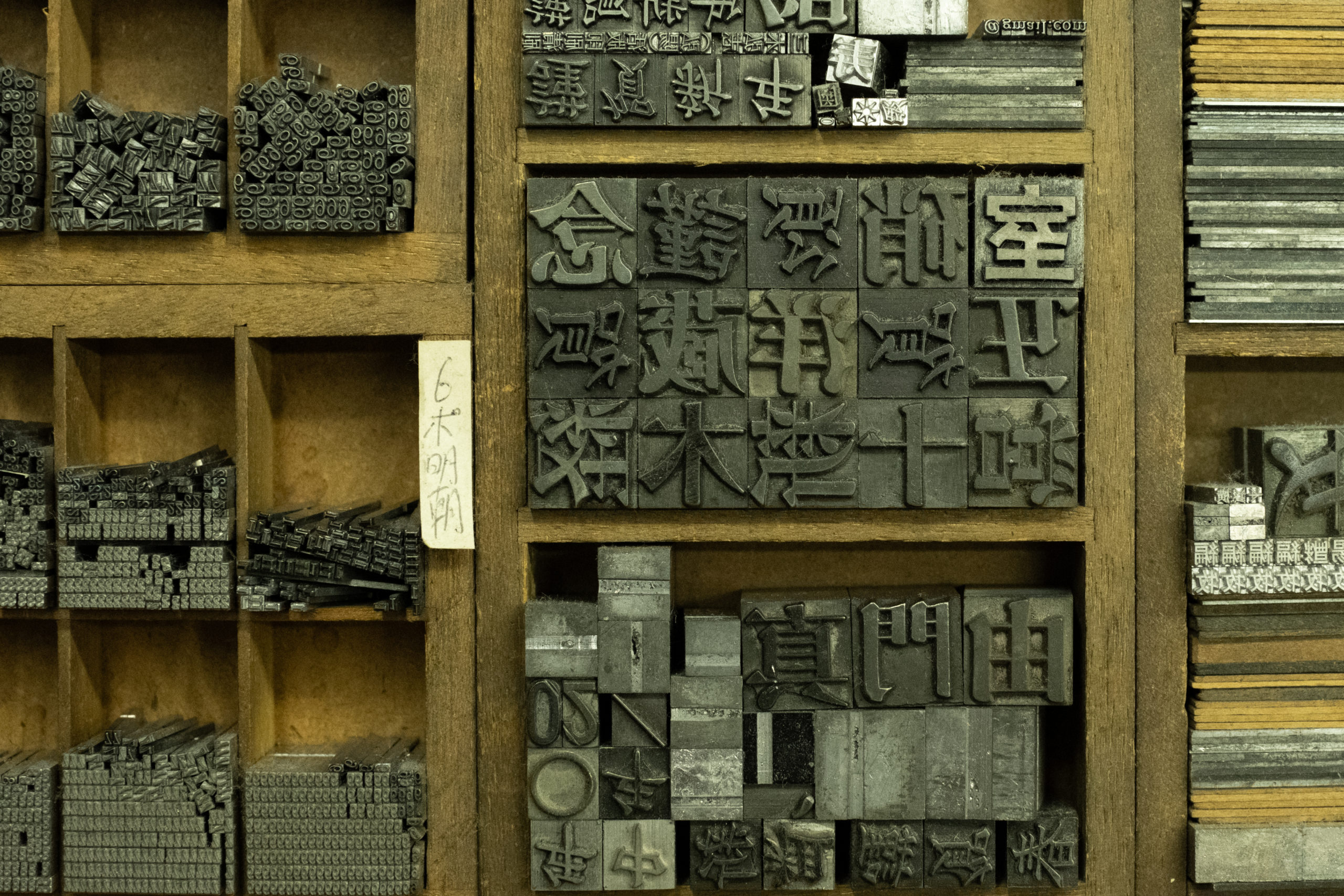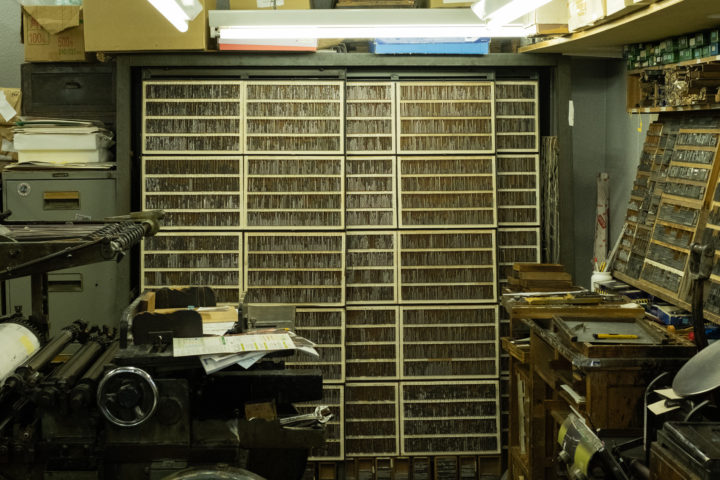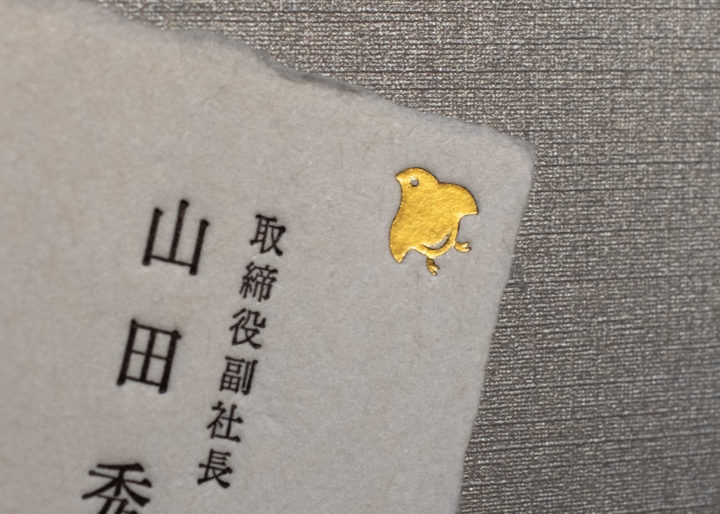
We want to create business cards that can be a source of inspiration for everyone’s ideas.” With that in mind, we started a project to make business cards that pay attention to every detail, such as design and material selection, serving as a sample of paper, printing, and processing technologies.
We applied letterpress printing to washi paper to give it a retro impression, and expressed luxury and delicacy with foil stamping and laser processing. In the previous article, we introduced in detail the design concept of this business card and the reasons for selecting the materials.
Having successfully completed such meticulously crafted business cards, we will introduce them along with information about the letterpress printing shop that collaborated with us on this production.
Selection of Letterpress Printing
In the past, letterpress printing was primarily used for printing business cards. Letterpress printing involves using metal ‘type’ where each character is engraved like a stamp to print text. Since various texts can be created by combining characters, it was widely used not only for business cards but also for printing books and other materials.
However, with the advancement of digitalization in modern times, most printing has been replaced by offset and on-demand printing, and letterpress printing has gradually disappeared. Initially, we planned to use modern relief printing techniques such as polymer plates for the business cards of this project, but upon research, we discovered that there are still companies in Tokyo handling type letterpress printing today.
Cooperation with Letterpress Printing Koyo
“Koyo,” located in Hatchobori, Tokyo, is a company that actively engages in letterpress printing. Mr. Miki, the president, is a skilled craftsman with extensive experience in the industry, handling various types of letterpress printing, including type setting, on his own. Originally a typesetter, Mr. Miki once outsourced printing to neighboring companies, but as letterpress printing declined, he acquired the printing skills himself.
A typesetter is a specialist who quickly finds the necessary characters from a large number of typefaces, combining them to create a printing plate. The quality of printed materials heavily depends on the skill of typesetting, including the choice of fonts, sizes, and layout adjustments. They are indispensable in printing using movable type. For the production of these business cards, we decided to entrust this crucial printing part to Koyo.

箔押しの種類
The next step in letterpress printing is foil stamping. Using thick washi paper, the densely printed characters from letterpress printing have a significant presence. In business cards where the text is the main feature, foil stamping serves as an accent that adds elegance. Although glossy gold foil is often used for foil stamping, we chose a subdued “matte gold” to achieve a more refined and sophisticated atmosphere. This choice was correct, and the combination with the slightly unbleached washi paper resulted in a finish with a luxurious and calm atmosphere.

Delicate Laser Cut Finish
The final step for the foil-stamped business cards is laser cutting. The washi paper used was relatively thick and had sturdy fibers, which raised concerns about the reproducibility of fine laser cutting and the risk of scorching.
However, we were able to achieve a very clean finish ultimately, highlighting the precision of laser cutting by creating holes with a diameter of about 0.5mm at a slight 0.2mm interval (there is more margin in the data). Processing small pieces of paper like business cards one by one is time-consuming, so we used a special jig that allows multiple sheets to be processed at the same time to work efficiently.
The completed business cards turned out to be expensive, but I believe their effect is proportionately significant. As mentioned before, business cards are small canvases that express the identity of an individual or a company. Therefore, we think the real value lies in the “meaning” that the business cards carry. We hope that the project, printing, and processing methods introduced this time will bring new ideas and insights to everyone’s creation process.

